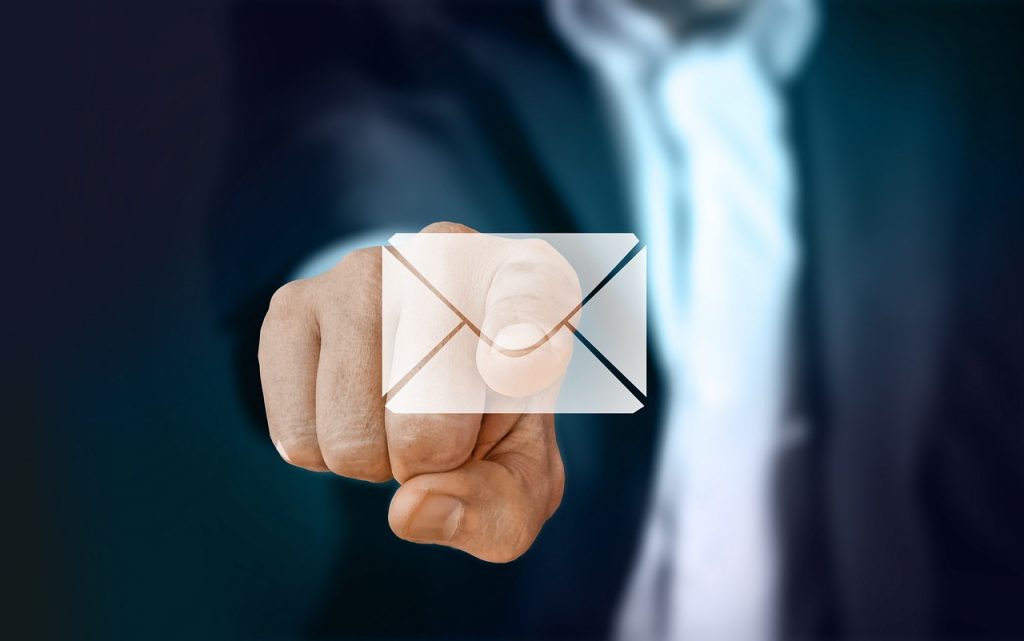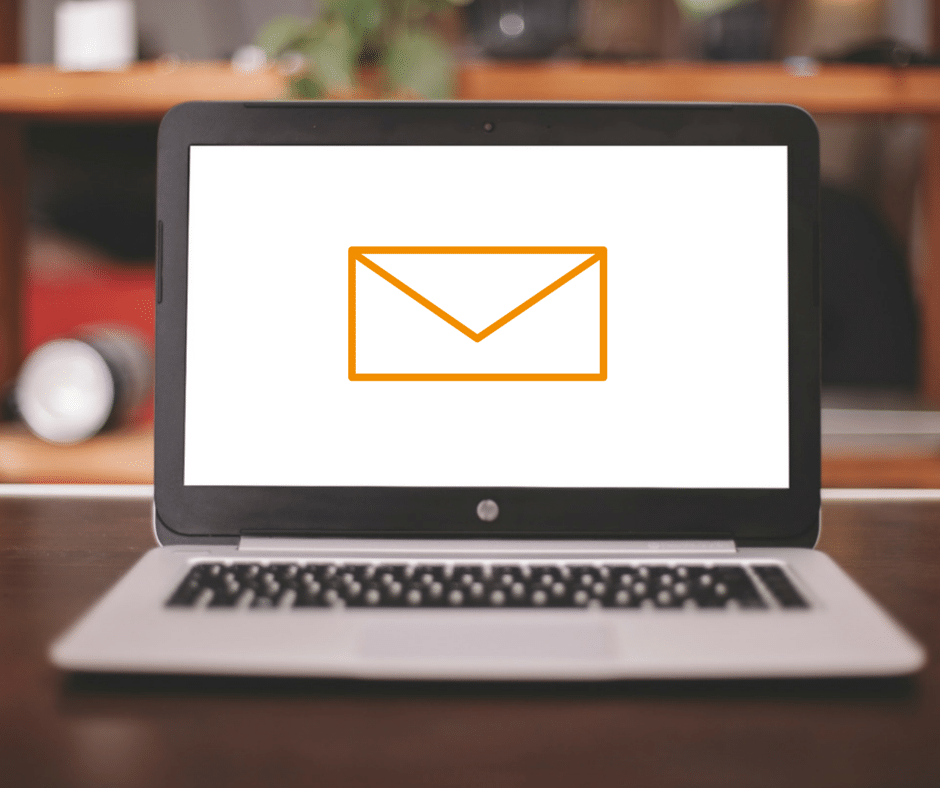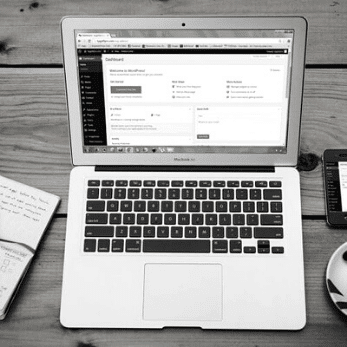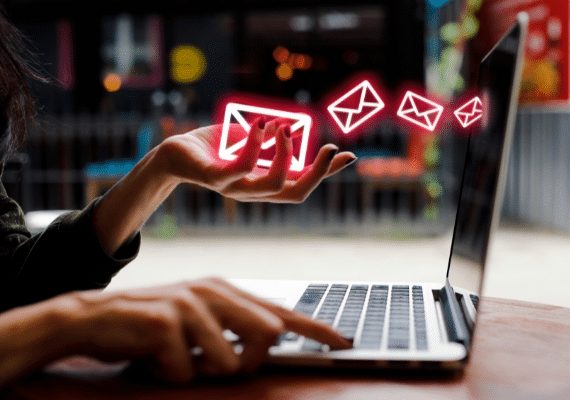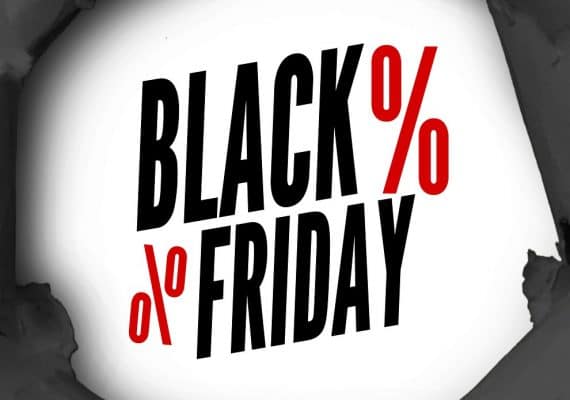Communicating with your customers is what content marketing is all about and getting your message across via all the channels available today is essential. Contrary to what you might read or hear, email marketing is very much alive and still one of the best online marketing strategies for a business. This blog is the SocialB guide to email marketing, in which we share some of our tips on how to create better emails.
Overview
- Reasons why to email your database
- Top 10 tips for better emails
- 5 email marketing best practices
- Email design best practises
- 20 keywords you should use
Contents
1, Reasons Why To Email Your Database
First of all, here are just 4 reasons why you should be emailing your database of customers to maximise your chances of winning their business before the competition does!
To Generate Business
This is the number one reason why you should be emailing your customers both new and existing. Email marketing, either as a newsletter or targeted product email, is a direct and easy way to communicate your message to customers and generate business.
Emails are personal and go directly to the customer’s Inbox, unlike social media where customers can miss your post.
Targeted & Relevant Emails
If your database has information about what customers have bought, then you can target products to those particular customers. As they have already purchased from you before they now trust you and when you recommend or present your other products as solutions, they will listen. You can also make customers aware of new services as they become available and keep them up to date with your range of products.
Personalising emails to include the name of the customer is a good way to connect and makes them feel important and much more likely to read the email than press the delete button. By ensuring your emails are timely and relevant to your audience increases the chance that the email will be opened and not considered ‘junk’ or ‘spam’.
Build Relationships
According to research, communicating with your customer once every three months helps to maintain the relationship. Trust is the foundation that lasting relationships are built on and when a customer trusts you, your company and the advice given, they will become a repeat buyer.
Emailing your database of customers should be done on a regular basis and add value with interesting articles, offers and news – not just when you want to sell them something. Don’t send emails for the sake of it though; make sure you have something to say that is worthwhile and useful to them. If you find you are getting lots of ‘unsubscribe’ requests, then take a look to see if you are emailing your database too much and try changing how and what you present in the emails.
Email Marketing is Cost Effective
Direct marketing can be expensive when you add up the costs of designing, printing and postage costs. Telemarketing is a minefield and savvy buyers will generally not give sales calls the time of day. Email marketing is extremely cheap to generate, free to send and reaches a large audience at the press of a button. You can create campaigns quickly when they are needed and get your message out there in a timely and efficient manner.
2, Our 10 Top Tips for Better Emails
Every company that invests in email marketing as part of their online marketing strategy knows that, in order to be successful, their emails need to be opened, read and clicked.
Here are some tricks that you can implement that will dramatically improve your emails, and get them to be opened, read and clicked:
1. Always Test Before Sending
This is one of the most important things you need to do.
Test links, appearance, cross-browser testing and make your emails look professional, this will give a positive impression to customers and potential customers.
You can even do A/B testing and send two different crafted emails to a small percentage of your database to see which has the best opening, read and click through rates before you send the winning email to your entire database.
2. Keep Subject Lines Short And Catchy
A good subject line can be the difference between your email being opened or deleted.
Make sure they’re short, but catchy at the same time. The goal is to quickly create curiosity, and the desire to open the email and know more.
Offering something like an insight or a deal can be a good idea.
3. Promise Something Good
This tip is in connection with the previous one. You should promise something good on the subject line, as well as in your email’s content.
By promising something good, you keep the reader engaged with your copy and want to know more. This is key in order for your readers to keep reading your email until they reach the call-to-action and are so engaged they have no other option but click on it.
4. Add A Clear Call-To-Action
Every time you send an email to your audience you want them to take an action (buy a product, register for an event, take part in a competition, etc).
So, make sure you have a clear and visible call-to-action in the body of your email so people can easily click. Do not make it a harsh sell, make it as a deal they can’t refuse.
5. Ensure emails display on mobile phones
Have your emails in both HTML and plain text – allowing people to read the email if it does not display correctly.
Also, include a link to a web version of the email.
6. Make It Easy To Unsubscribe
Having people unsubscribing is a normal thing that happens to every company.
It is your duty to make life easier for people that wish to do so and keep the connections with you as a good experience, even if they wish to stop receiving your communications.
Also, making it easy to unsubscribe prevents complaints and emails being reported.
7. Be Valuable
Each subscriber has given you a hard-earned vote of confidence, and they expect to hear from you but only if you have something valuable to say to them, so respect that trust.
Only send emails to your database when you really have something to say that will deliver the real value (a new product, a discount, competition, promotion, etc).
If you send emails just for the sake of it without being valuable, you’re wasting people’s time and your money with no chance of return.
With so many emails that people received daily in their inboxes, they’ll know that if they receive one from you it is because they’ll get something relevant.
8. Use Peoples Names
Personalised emails using people’s name is an amazing strategy to create a dialogue and make them engaged with your copy.
But don’t repeat people’s name too often in your copy because it makes you sound like a call centre script.
A good strategy is to use the name in the salutation and next to your call-to-action to encourage people to click on it.
9. Give Something For Free
Whatever the purpose of your email, make sure people benefit from reading your emails. How? Share a useful tip, a “how-to” advice, make them feel better or inspire them.
For example, if you’re trying to sell a new book, share some tips from the book that people instantly relate to. This sharing of something for free will make them feel good and increase the chances of your email being read and clicked (and next emails to be opened too).
10. Write With A Human Voice
When you write your emails you shouldn’t think about your entire database. Think that you’re writing the email to your best customer that happens to be a real person.
So write something you would feel comfortable reading. Sound friendly, but still professional and don’t overload with techno-speak. The trick here is to make people feel connected to you!
3, 5 Email Marketing Best Practices
It is a great way to connect with your customers and keep them engaged with your brand, even encouraging them to visit your website, take advantage of a promotion, or make a purchase.
Email marketing is not a difficult tactic to master but you must be aware of the following 5 best practices if you want your emails to achieve the desired goals:
Have an engaging subject line
If you want your subscribers to open your emails you need to write an appealing subject line, especially when most people are bombarded daily with emails from several companies in their inboxes.
You want to make them feel a specific emotion that makes them want to know more: feeling intrigued, excited, surprised, you name it. That’s the number one reason why people open an email. Emotions act as triggers.
You might also want to continue using the same subject line every time with a slight variation. This way your customers instantly know it’s from you and will stand out from the “crowd”.
Add a specific call-to-action
When you send an email to your subscribers, you’re not only informing them of something, but you want them to act upon it. It can be your readers clicking to take advantage of a promotion, be the first ones to try a new product or watch a new video.
Whatever the reason is for you to send an email, and in order for them to perform that action, you need to have a clear call-to-action like for example a “click here” button.
This will make sure they know exactly what to do next.
Get personal
The inbox is a great opportunity to humanise your brand and create a personal conversation.
This means not only using each person’s name on the salutation but also using a friendly tone of voice. You should write your copy as in a real email conversation like for example telling a story that engages the reader and that ultimately leads to your call-to-action.
This creates a personal experience for the person on the other side of the screen where they relate to your copy and increases the chances of having more clicks on your call-to-action.
Always provide value
Of course, your emails have a goal in mind and it can actually be increasing sales of a specific product, but this doesn’t mean they need to be blatantly sales-y.
Always write your copy in a way that provides value to the customer.
If you’re, for example, launching a new product, explain why you’re doing it and how it helps your reader. So it’s all about showing the benefits and value of them having your new product encouraging a sale but in a subtle way.
Make sure you test before
Before you send the email to your entire database, and especially if it is a key email in a key time of the year, make sure you do an A/B test.
A/B Split Campaigns allow you to send two different versions of your campaign to randomly selected parts of your list. The version with the most opens or clicks is then automatically sent to the rest of your list. It is a clever way to increase your openings and clicks.
4, Email Design Best Practises
Now that GDPR is up and running, it will undoubtedly have an effect on email marketing and especially the number of customers who have consented to continue to receive our newsletters and marketing emails. While your marketing list may be shorter post GDPR, looking on the positive side, for those customers who have chosen to keep up to date with your services and products, their inboxes could be a lot less cluttered.
Whatever the outcome, it remains essential to ensure that your emails entice users to open and click through to your website or promotion. This means that you need to work even harder to get the design and format of your emails and newsletters right in order to continue to drive traffic and revenue.
Personalisation
We’re not talking about adding ‘Dear Cheryl’ to your emails but making your design more human. With technological advances at an all-time high, receiving an email has now become a much more personal experience, and more like receiving a letter in the post once was. Try ensuring the language you use is less machine-like and more emotive. Using the now ‘precious’ data we have about our subscribers to create emails that establish trust and focus on the consumer rather than just on the campaign is the way forward.
Interactive Email Experiences
In a bid to make emails more appealing, one email design practice is to involve the user more with interactive experiences. We know images work in emails and we’re now seeing animated GIFs, but there are many more ways to get customers involved. Interactive emails allow subscribers to interact with an email from their inbox such as hovering over an image to reveal product details, clicking a hamburger menu to see a drop-down, an interactive quiz within the email and even shopping by adding items to a basket within the email, before going to checkout securely. Although its essential to ensure that these interactive experiences don’t have a detrimental effect on the load speed especially on mobile devices.
Bite Size & Story Telling Content
This is not one or the other but a mix of both and even using bite-size content to create a story, what works well will depend on your subscribers, industry, subject or campaign. Telling the story why we should buy something not just what colour or price the product is can be the hook. We are also increasingly seeing more text-based emails, for example using blogs in their entirety in an email can capture readers full attention and one well-placed CTA may work better than half a dozen different messages throughout an email.
Unsubscribing Made Easy
The unsubscribe button just got a promotion under GDPR! When it comes to the unsubscribe link, some companies in the past have created complicated processes. How to unsubscribe should be clear on every email and be a simple and straightforward process, it doesn’t always mean you’ve lost a customer just because they want to leave your marketing list!
Shareable Social Sections
When was the last time you clicked on the social buttons at the bottom of an email? One of the latest email design trends is to add a sharing icon on an infographic, stat or quote within the email. If users find this interesting, they can share it on social media and get your message to more people.
Design, Styling & Brand
Whilst its vital to keep your brand style in all your email marketing, mixing up your template can be a good thing. Just like repeating the similar message over and over can get repetitive and turn subscribers away, using the same template design gets boring. The answer is to ensure users continue to immediately recognise your brand but refresh your template to keep their attention.
5, 20 Keywords You Should Use In Email Marketing
Every time you send an email to your database of customers and potential customers your goal is for them to open it, read it and act upon it. That’s why the words you choose to write in your emails are so important. They have to be powerful and engaging, from the subject line to the call-to-action, so they influence emotions and persuade action.
Of course, each email is different from the other and each business has their own tone of voice, but there are certain words that are time-tested to boost response and conversion rates.
Here are the top 20 words:
1. You
Your emails should be written as if you’re directly talking to only one customer. Using the word “you” makes each one of them feel that.
2. Free
Because we all like free things.
3. Value
This word suggests that the reader is getting something instead of losing something. They’re not losing money, they’re getting a valuable benefit from your product/service.
4. Easy
Make it simple for customers to read your email and go through the next step in the purchasing process.
5. Instant
Instant downloads, access, and gratification are more appealing than waiting.
6. The
This shows that your solution is the “end-all-be-all”. Example: “Best 3 solutions to save money” versus “The 3 best solutions to save money”.
7. New
We all like to know about new and innovative things and this word shows that your product or service is at the top of their game.
8. Secret
Tell your customers that there is a certain secret about a specific situation and that you can reveal it to them.
9. Results
Your customers want to know what is new, instant, valuable, free or easy. But, at the end of the day, they want results from it.
10. Premium
The word premium denotes high quality to a product or service.
11. How
Your customers want solutions, so show them how to do certain things or how they can benefit from what you’re offering.
12. Save
A powerful word that shows monetary or time savings.
13. Everything
This word shows that your customers don’t need to go anywhere else to get what they need, you can provide them with everything.
14. Amazing
People are really curious to continue reading and see what is that is amazing.
15.Fantastic
The same effect as the word amazing.
16. Proven
Shows that your product or service is tried-and-true.
17. Exclusive
People love to feel that a certain product or offer is exclusive to just a small important group of people – with them included.
18. Now
This word encourages people to act because it creates a sense of urgency. You can use it in your call-to-action.
19. Off
If you can offer your customers an incentive like 50% off or £20 off your next purchase, you’ll raise interest quickly and give them an incentive to buy.
20. Sale
‘Sale’ is the old faithful of marketing words. While it is used by many businesses, it still has the power to motivate customers.
That’s it!
We hope this guide has shared some useful information with you on how to create more effective email campaigns!



